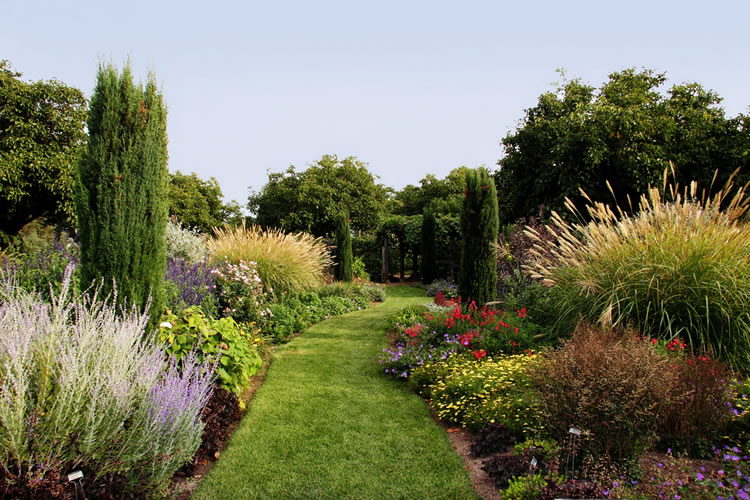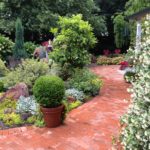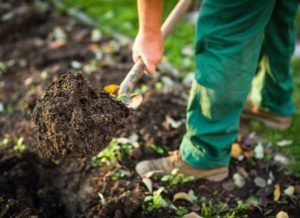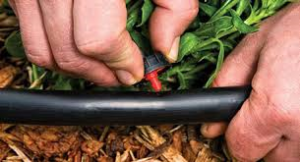New Landscape Care (FAQ’s)
We get a lot of questions on how to keep your new landscape investment beautiful. We’ve shared the most frequently asked questions and they’re respective answers. If you don’t see something on this list, please feel free to contact us anytime for additional guidance.
• Q: I’m seeing weeds in my new landscape. I thought my garden was supposed to be low maintenance?
o A: All gardens will have weeds growing throughout their growing cycles, but some seasons will produce more (i.e. the rainy season and early spring). Weed seeds are naturally found in the soil, as well as blown in on the wind or dropped by birds and other critters. The best way to prevent weeds is to apply a pre-emergent product (like Preen Weed Preventer) and either pull or spot treat any existing weeds when they’re small. Organic treatments are usually vinegar based and can be found in most home improvement stores or online.
• Q: My new landscape is drought tolerant, but when can I cut back on the watering?
o A: Most, if not all, of the tree or plant selections for your garden are low water use specimens. However, every newly installed tree or plant will require regular watering initially, which allows the plant to become established and promotes good overall health. Approximately after one to two years, the trees or plants have grown enough to sustain less frequent watering. In fact, they’ll perform better! Of course, this can vary depending upon your exact specimens and for this we always recommending either contacting us or you can search online.
• Q: My plants have yellowing or brown leaves. Is the plant dead or dying?
o A: Not necessarily. Most trees and plants will naturally lose or shed leaves throughout their life cycle. Generally, it’s best for their health to regularly remove the spent leaves, promoting good air circulation which reduces the chance of fungal pests.
• Q: My plants are wilting. Should I give them more water?
o A: If you do, the chances that you’ll end up drowning and ultimately killing your plant is high. Best thing to do, is to insert your dry finger into the top two inches of the soil to see if it’s damp. If the soil is soaking wet, then you’ll need to allow time enough for the plant to dry out. If it’s dry, then go ahead and run your irrigation cycle again. Please refer to our Irrigation System FAQ sheet (also on our blog) for more information on this topic.
• Q: The edging of our pavers is or has separated. Is this normal?
o A: Yes, completely! It’s expected as the ground will naturally expand and contract with the daily heating and cooling temperatures. If you find that your edging is broken in an area or has slipped too far away from the edge, then please contact us for an inspection and/or repair service.
• Q: How often should I replace the sand in our paver joints?
o A: This is entirely up to you actually. Generally, you can refresh the sand joints in a paver installation approximately once per year. Of course there are other variables that can affect how frequent this should be done, but mainly once per year is adequate. If you have Polymeric Sand joints, then this can be done as needed or desired.
• Q: My water feature is growing algae. Is there something to prevent this?
o A: Absolutely! We recommend purchasing a product called ‘Fountec’ from your local home improvement or pool/spa supply store (it’s also available online). Another good option is to purchase the smallest (generally 1”) chlorine or bromide tablets from the same retailers or online. Depending on the size of your water feature, one tablet should last until it’s dissolved, and just add another one.
• Q: How long should I wait to mow my new sod after installation?
o A: Typically, it takes a new lawn about two weeks to root enough to be mowed. This process slows down considerably in the cool months, usually to about 4-5 weeks. The best way to ensure full rooting, is to gently lift up one corner of the sod pieces. If it comes up easily, then it’s definitely not rooted. If it doesn’t come up at all, mow away!
• Q: When is the best time to prune my trees and/or plants?
o A: This is quite variable, since there are so many different species and varieties of trees and plants, each with their own specific set of care guidelines. There is also corrective pruning and size management/reduction pruning. As a general rule, after the chances of frost have dissipated (somewhere around mid-February) is a good time to prune back any dead wood or errant branches. That said, some species will be producing flowers at that time and you could possibly prune away all your beautiful blooms. When in doubt, it’s best to contact us or search online.
• Q: Our newly installed concrete has cracks in it. Can anything be done to repair it?
o A: The quick and honest answer is no. It is the inherent nature of concrete to crack and it’s guaranteed to happen. Patching concrete is a temporary solution, but the cracking will continue. In order to “repair” or “fix” cracked concrete, it has to be saw-cut and/or jack-hammered out, then new concrete is poured. Essentially repeating the process with the eventual same result.
• Q: Our new redwood pergola is leaching tannins and staining our paver patio. How can we treat this problem?
o A: Depending on how much sun exposure the stained area receives; the stains should naturally dissipate slowly over time. This is a natural byproduct of redwood and eventually the rains will wash away all the tannins within the wood, over a good deal of time. As a side note – if you’ve ever been walking on a sidewalk that looks like it has leaf tattoos, this is the same process, just nature at work.
• Q: Why does your company prefer to not use weed cloth?
o A: Quite frankly, it doesn’t prevent weeds. We feel that it’s an unnecessary expense, and is more harmful to your landscape by not fully allowing water transfer and compacting soil. Also, it can introduce unknown toxins into the soil and potentially create more work in the garden overall. We do occasionally install it under pathways to increase stability, but it does nothing for weed prevention. There’s several web links that elaborate on our thoughts and feelings as well.
• Q: How often will we have to replenish our bark ground mulch?
o A: Usually, we recommend refreshing your mulch once per year, but if you’ve got adequate coverage and the plant roots are protected, you can go longer. If you’re raking or air sweeping on a regular basis, this will deplete the mulch much faster, making it necessary to replenish more often.
• Q: When should we remove the tree stakes on our new trees?
o A: Approximately 2-3 years after installation should be sufficient time for your new trees to establish themselves in your yard. If you’ve got a tree that seems to be having a more difficult time adapting, it’s a good idea to leave the stakes on longer. Additionally, if a “nursery” stake was overlooked and is still attached to your tree, please remove it immediately as it will hinder the proper growth of the tree.
• Q: My plants have been infested with aphids. How can I eliminate them safely?
o A: The best, non-toxic and environmentally friendly way to rid your plants from aphid infestation is to fill a spray bottle with water and add a few drops of liquid soap. Apply this mixture liberally to the infested areas, but be sure to do this early in the morning. The thin coating of soap suffocates them and before long you’ll be aphid free!
• Q: How often should I hand water potted plants?
o A: Depending on what you’ve got planted and in what type of pot (terracotta is the most drying) you should hand water potted plants on a daily basis in the warm months. You can reduce the frequency as the weather turns cooler.
• Q: How often should I fertilize and what kind of fertilizer should I apply?
o A: There are a few different approaches to fertilization, but we recommend using a granular 15-15-15 for trees and plants, and a granular 21-0-0 for lawns. Follow the instructions on the label of your preferred product and water in the granules thoroughly after application. Also, it’s key to not do this during warm weather as it increases the chances of burning and potentially killing your plants and/or sod. Furthermore, there are certain species that are classified as “heavy feeders”, such as roses and citrus. These heavy feeders appreciate an extra treat of liquid fertilization, which is easy to apply via a hose mounted attachment such as Miracle Gro Liquafeed.
We hope that this has provided a good baseline for caring and maintaining your new landscape. We’re always here to assist in any way, so don’t hesitate to contact us should you have any questions.







